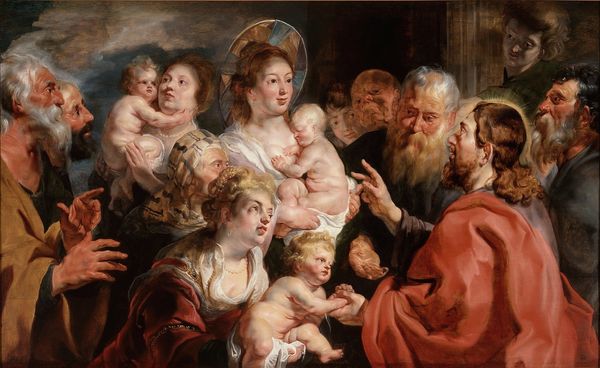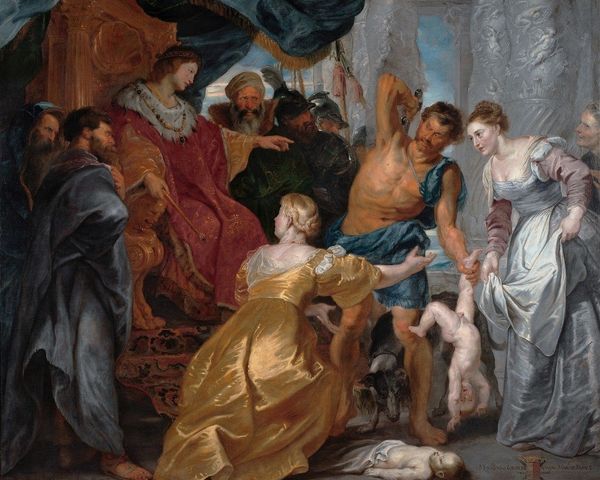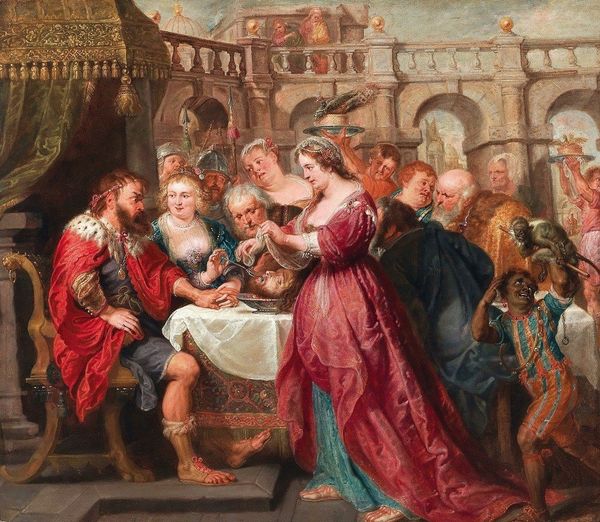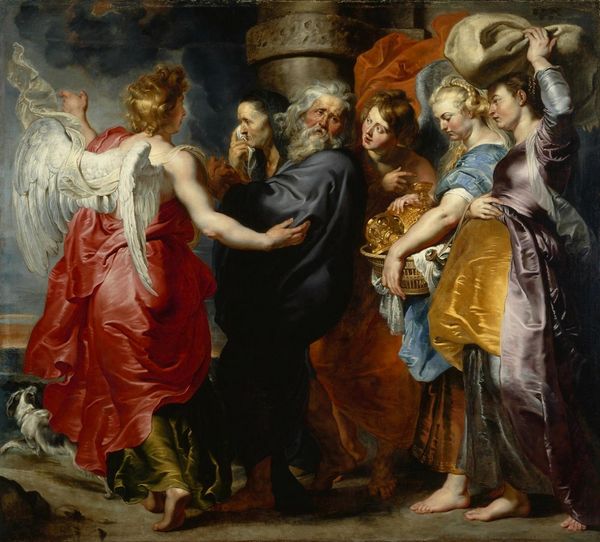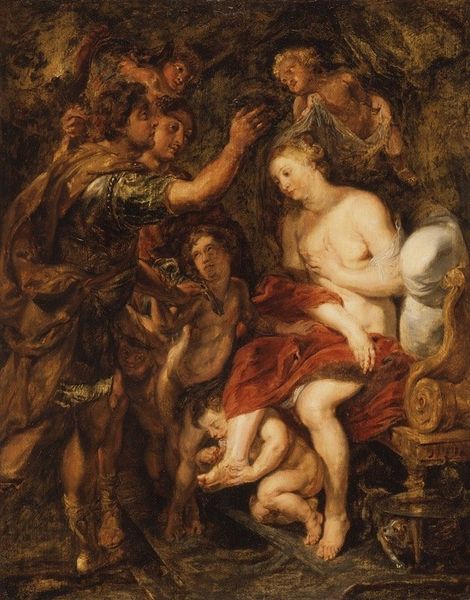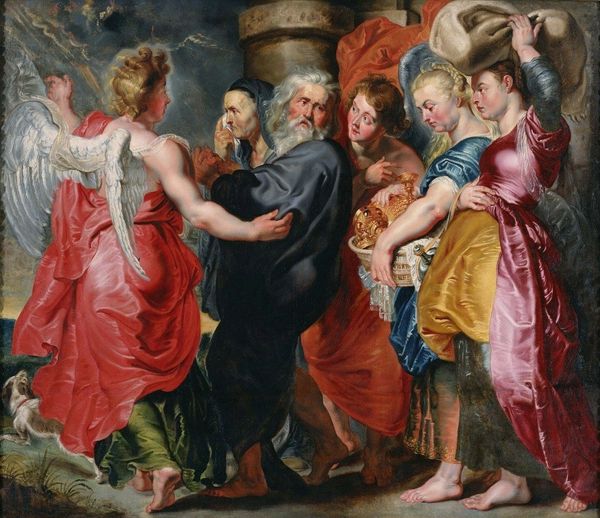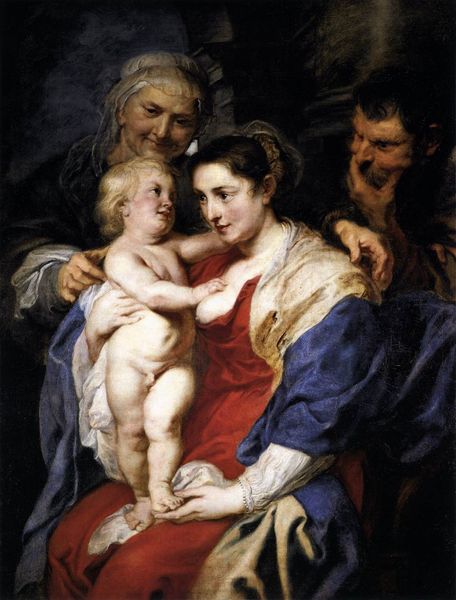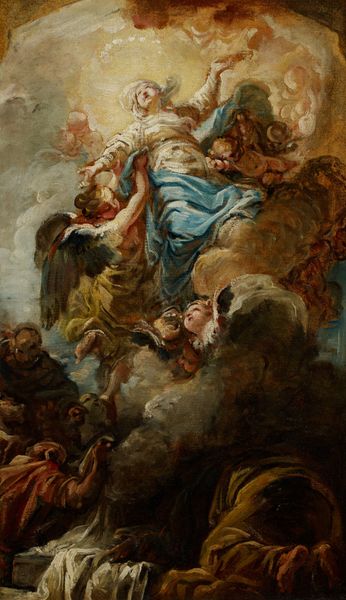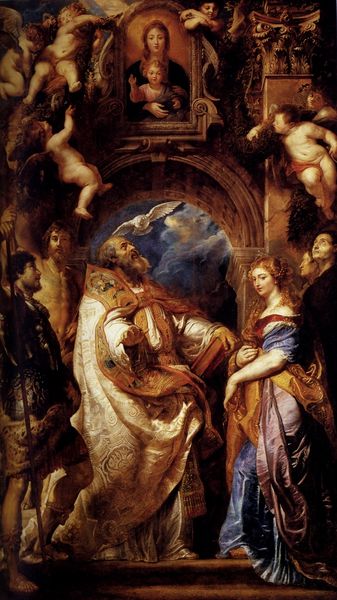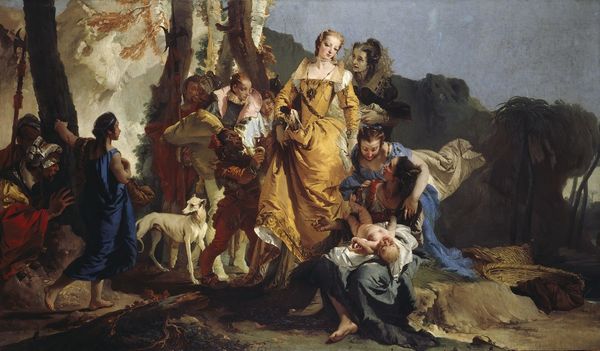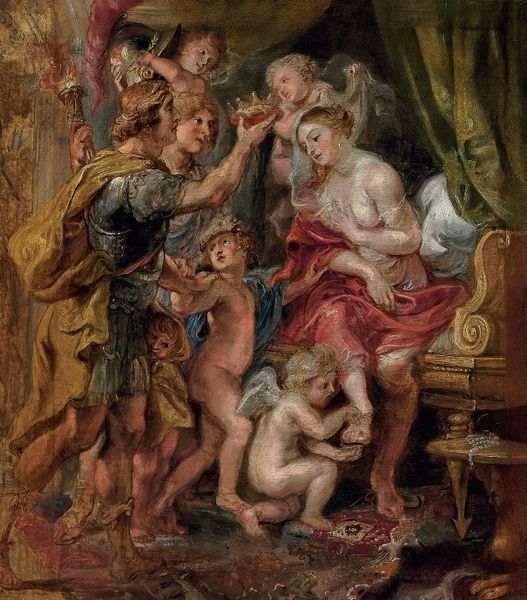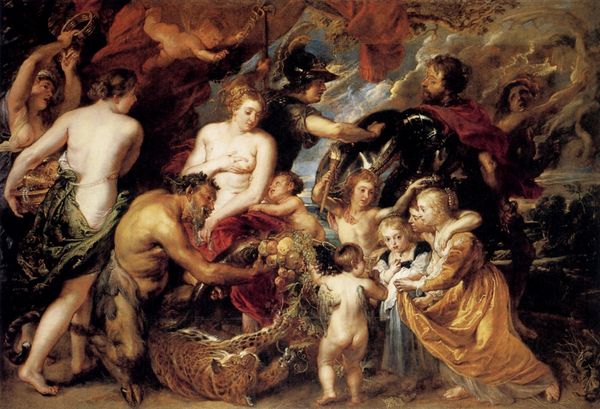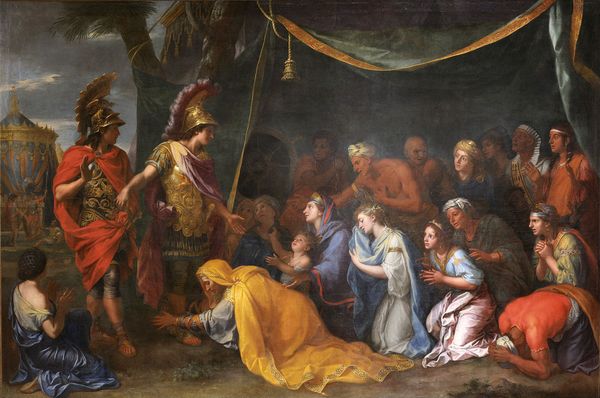
oil-paint
#
allegory
#
baroque
#
fantasy art
#
oil-paint
#
figuration
#
oil painting
#
mythology
#
history-painting
#
erotic-art
Copyright: Public Domain: Artvee
Curator: Editor: This is Rubens’ “Venus and Mars,” created sometime between 1632 and 1635. It’s an oil painting, and the textures of the skin and fabrics look so rich. There's almost a fleshy weightiness to everything. What can you tell me about it? Curator: The very *stuff* of this painting speaks volumes, doesn’t it? Rubens’ manipulation of oil paint itself—thick impasto against glazed layers—demonstrates the opulence favored by his patrons. Think about where the pigments originated: mined minerals, processed plant dyes. Consider the labor invested in canvas production, stretching, and priming. It reflects the societal power structures of the time, no? Editor: That’s a perspective I hadn't really considered. How does the materialism affect the meaning? Curator: Doesn’t the depiction of leisure through material display reinforce the idea of a hierarchical society? The plump, sensuous bodies of Venus and Mars become products of consumption, mirroring the lavish lifestyles enjoyed by the aristocracy. Even the choice of a mythological subject like "Venus and Mars" becomes about showcasing wealth and access. Who had the leisure time and money to cultivate such art? And more to the point, who labored so that such things could exist? Editor: So it's less about the allegory and more about…the social context of its making? Curator: Precisely! What does it mean to represent love and war through such carefully curated—and expensively obtained—materials? We are led to question not just the symbolism, but also the social and economic machinery behind its creation. Do we lose the aesthetic value when analyzing the "how and why" of its creation? Editor: Not at all, actually, I think I understand it much better. Thanks for offering a fresh view.
Comments
No comments
Be the first to comment and join the conversation on the ultimate creative platform.
